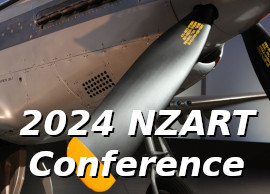Do you have a story that would interest your fellow readers?
Or a superb photograph for the front cover!
As with all things, it helps me if you follow some simple guidelines.
Material for publication in Break-In is first checked by the Editor before being sent to the Typesetter.
Text Presentation
Look at a current copy of Break-In and try to match the format of headings and titles: e.g. use of capitals, bolding, etc. For example, Break-In does not use capitalised or underlined headings.
Please submit as a MS Word *.doc or docx. Otherwise submit as an *.rtf as some still do.
Set the Language default to English (New Zealand) when using Word or your word processor.
Remember the difference between a metre (a measurement of length) and a meter (a test tool used to measure two or more electrical values)– so spelling and grammar are important to get your message across correctly.
Our preference is for 12 point Times New Roman for all text including headings, with no line spacing, along with no tabs, including no tabs at the start of each paragraph.
Submitters should avoid multiple presentations of superscripts, subscripts, and even equations in the text of articles.
Break-In and Call Book are always written in italic.
Although length of the article shouldn’t deter you from writing any article a word count of between 2000-2500 should be aimed for as a maximum. If longer than this then the article may have to be split across two issues of Break-In, not perhaps an ideal outcome as we
only have issues every other month throughout the year.
Pictures
Please do not embed pictures in the text but do indicate where they are to be inserted if you wish. There is no guarantee that they will be inserted in that position because of picture size and design layout. If you are referring to a particular picture or diagram in the text of the
article it is best to say see Picture 1 or see Figure 1. (i.e. Picture 1. Map of the World) (Figure 1. Circuit diagram).
Also change the picture file name to the caption title, keep them terse. This saves a lot of work because we are presenting only one file name to be the same as the caption title name.
Please submit photographs and diagrams as JPEG files. For pictures to be presented on the front cover or the inside back cover in colour, a high resolution 300 dpi is recommended and at around 3 or 4 MB or larger which most cameras/phones can easily produce.
Send pictures as attachment in the same email.
Circuit Diagrams
If you don’t have a way to produce circuit diagrams then hand write them out and take a photo of them. The Technical Editor can then re-produce them correctly for you.
Tables
Tables are best made using an Excel spreadsheet. The same 12 point Times New Roman for all text including headings. Contest results are one example. Send as an Excel file. External and internal line borders are created from the Tools menu. Please copy and paste into a Word document and present that also.
References
References are best tabulated at the bottom of your article. Those references may be a book or other publication or an internet URL. Within the scribe of your article, at the end of your sentence insert [1]. At the bottom of your article also present [2] and include the written reference or URL you are referring too.
For example:
References:
[1] Transformer equivalent circuit <http://analog.intgckts.com/coupled-inductors-as-transformer/>
[2] Article with Morse photo <https://en.wikipedia.org/wiki/Samuel_Morse>
Web and Email addresses
Web address need the hyperlink removed and should be presented within brackets e.g. <https://en.wikipedia.org/wiki/Samuel_Morse>.
Email addresses need to be presented in the same way with the hyperlink removed e.g. <zl2ufi@nzart.org.nz>
Some web addresses are too long for readers to key in, or contain too many characters for them to get right.
So, go to https://tinyurl.com and use this web site to reduce the number of characters down as much as possible, e.g. <https://en.wikipedia.org/wiki/Samuel_Morse>. Becomes <https://tinyurl.com/gocmulu>.
Writing the article
Best way to do this is to start it, and just keep chipping away at it until it is done. Perhaps have a friend read it through.
Just like writing a story it needs a beginning, a middle and an end. Apart from that it can be very easy to do, the hardest thing is starting it to begin with!
How to send
Send your articles or thoughts about writing an article via email to editor@nzart.org.nz.

